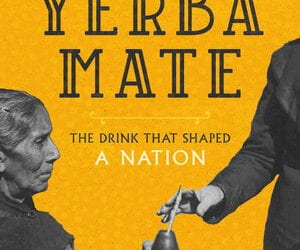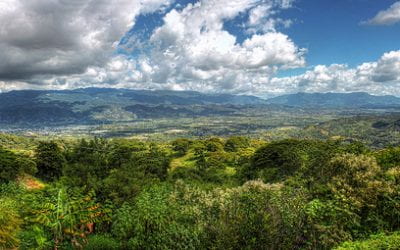The Tragedy of Tauccamarca
Neocolonialism’s Negative Impacts in Peru

The vision of 24 small coffins scattered in Tauccamarca’s main square still causes me pain even today.
When half of the village’s children under six years old perished from pesticide poisoning on October 22, 1999, I was a young doctor just graduated from a public university, working at the Peruvian Ministry of Health Epidemiology department. I had to leave for the isolated highland area near Cusco.
I found 24 children dead and another 24 struggling for life—many of whom would become seriously disabled. What was even more shocking is that I learned that it was the mothers themselves who had accidentally poisoned the children. The Indigenous mothers did not know how to read or write Spanish—let alone English— and had confused the sacks of pesticide intended for coca eradication with powdered milk. The large sacks of white powder donated by USAID had no visual markings.
I proceeded to the verbal autopsy, the mothers cried in silence, learning how deeply harmful international aid can be when disregarding the culture, reality, economics, human, social, economic and political dimensions of whom it is supposed to benefit.
The children drank the powdered milk substitute contaminated by methyl parathion, a highly toxic organophosphate pesticide. They immediately began to show horrific symptoms. Parents carried the little ones in their arms to a primary health center about 45 miles from Tauccamarca. For many, nothing could be done.
The village teacher and the mother who mixed the formula are still in jail. No one from USAID or any figure of authority has been charged with a crime. The deaths of these children and the injustice of the jailings brought home for me the consequence of colonialism in times of post modernity.

It’s how I first realized the continued power imbalances and inequalities that exist within the global health community, rooted in historical relationships of exploitation and dominance, in which colonial powers extracted resources and knowledge from colonized countries, often without regard for the health and well-being of local populations.
Today, colonialism in global health can be seen the disproportionate control of funding, research, and policymaking by high-income countries and their institutions, as well as the marginalization of the perspectives and experiences of low- and middle-income countries and communities.
Ignoring the historical and ongoing impacts of colonialism perpetuates the same power dynamics and injustices that have led to health disparities in the first place.
 When I was discussing the Tauccamarca tragedy with my Takemi Health Fellowship colleague and co-author Michelle Amri, we observed how the highland deaths were intimately tied up with both foreign aid and the war on drugs. The United States Agency for International Development (USAID) played deadly role through its aid efforts. The war on drugs caused the pesticide to be shipped to the village in the first place.
When I was discussing the Tauccamarca tragedy with my Takemi Health Fellowship colleague and co-author Michelle Amri, we observed how the highland deaths were intimately tied up with both foreign aid and the war on drugs. The United States Agency for International Development (USAID) played deadly role through its aid efforts. The war on drugs caused the pesticide to be shipped to the village in the first place.
U.S. Influence on Peru
Embracing a simplistic understanding of the challenges with combating illicit drugs, President Ronald Reagan targeted Latin American countries producing illicit drugs. Following Reagan’s declaration of the war on drugs on October 14, 1982, the Reagan administration employed crop eradication, a supply-side strategy that sought to eliminate the supply of drugs at the source. Because virtually all the world’s cocaine is processed from coca grown in the Peruvian Andes of Peru, in addition to some grown in Colombia, Reagan prioritized both countries for crop eradication. In Peru, this involved the extensive use of herbicides, usually applied aerially, to destroy opium, marijuana, and coca crops.
Beyond the extensive use of aerial herbicides, the U.S. domestic drug crisis helped Reagan secure public support for military activities in Latin America. Drugs were framed as a national security threat, providing the impetus for continued, and even increased, military funding in an atmosphere of uncertainty created by the drawdown of the Cold War (Ostler, 2013). Thus, Reagan strengthened the Peruvian and Colombian armed forces in their struggle against radical left-wing guerrilla movements—the Shining Path and FARC respectively—that exerted increasing control over drug production and trafficking at that time.
Reagan was able to draw on USAID as a crucial weapon in the war on drugs to further U.S. government interests. The involvement was not new. Twenty years before Reagan’s war on drugs, beginning in 1960, the Peruvian state sought economic development primarily through improving agricultural production. Given USAID’s focus on health programming, economic growth and poverty reduction, it became a leading aid agency in Peru in 1961, along with the Peace Corps and Instituto Linguistico de Verano, a private group later found to have CIA connections.
Since USAID already played a large role in Peru, the organization was utilized to pursue counterinsurgency in Latin American countries at a time when the American public’s support for Cold War military interventions was at an all-time low. In the United States, Reagan abandoned the Carter administration’s focus on medical treatment for addiction in favor of a punitive approach, that in some cases constituted cruel and unusual punishment. Though it is difficult to determine how personally invested Reagan was in the drug war and in domination, pursuing the war on drugs was consistent with his own sense of U.S. identity, traditions and values.
Despite its central tenant as a war on drugs, Reagan’s supply-side strategy that sought to eliminate the supply of drugs at the source failed. Ultimately, if the demand for drugs exists, people will find a way to supply it. Thus, the balloon effect arose — an analogy to illustrate that like squeezing a balloon, eradication efforts of illegal drugs result alternate sources of supply, or movement of activity to areas with less resistance.
Select consequences of neocolonialism in Peru
Even after Reagan’s war on drugs and extended actions in Peru, escalating human rights abuses and “narcoterrorism” have continued to have an effect on direct mortality and morbidity, rooted in the history of the supply-side approach. The measures empowered the Peruvian armed forces and security services, contributing to escalating human rights abuses — notably at the time Reagan’s war was demonstrated as ineffective in the United States.
The discourse around “narcoterrorism” escalated over time. Although narcoterrorism is a rhetorical weapon originally designed to attack Cuba and Nicaragua, it has since evolved to portray communist insurgencies in Latin America as a national security threat to the United States. Both Carter and Reagan’s foreign assistance policies were predominated by political-military considerations. Peruvian politicians were not in agreement, opposing the destruction of plantations and suggested promoting alternative income sources for Peruvian farmers (Wordliczek, 2015).
That was not the only case of Peruvians nor being listened to or their culture taken into account.
USAID involvement in both agriculture and nutrition occurred without extensive community engagement. Powdered milk and powdered pesticides invaded the highlands over much of Latin America. We now know that breastfeeding is far better than formula, but no one that fateful day expected formula to be deadly.
These two examples of neocolonialism serve as more than just illustrations of how international players negatively influence health. Instead, they should lead us to question the roles played by various stakeholders in global health and consider whether these roles are justifiable.
The Need for Accountability
The tragic case of pesticide poisoning and deaths among the Tauccamarca children highlights the need for accountability and the importance of understanding the culture, language, policies, social norms, forms of community organization and needs of the populations USAID intended to support. USAID’s assertion that these deaths were accidental and caused by misuse is not acceptable. Such tragedies are foreseeable and preventable. USAID and other aid agencies should carefully consider the ethical, political and technical feasibility of implementing programs without prior consultation with the communities they aim to serve. This is especially important for programs targeting young children in Quechua communities, where cultural and geographical barriers may exist.
Ultimately, in line with efforts to decolonize global health, we need to reconsider international interventions that introduce foreign ideas, strategies and programs for development purposes, being mindful of the questionable human rights motives behind such actions.
These examples of colonialism are not meant to be merely illustrative cases of how international players influence health in negative ways, but rather to lead to understanding and questioning the role various stakeholders play in health and whether these roles are justified.
These observations may seem a bit abstract to you, especially if you’ve not experienced colonialism first-hand. But I can tell you that there is nothing abstract about 24 tiny coffins. The image continues to haunt me.

Selene Manga is a Peruvian doctor who is a Takemi Fellow in International Health Harvard School of Public Health.
Michelle Amri is a Takemi Fellow in International Health, Harvard School of Public Health.
Related Articles
A Review of Yerba Mate: The Drink that Shaped a Nation
On any given day, millions of South Americans—in the subcontinent and around the world—would engage in the same ritual. We heat water (making sure it doesn’t boil), prepare the mate, and sip, sip and sip. But where does that green, earthy, addictive, and for many outside South America exotic, drink comes from?
Editor’s Letter – Indigenous Voices
Editor's LetterFrom the Maya in Guatemala to the Mapuche in Chile, Latin America’s Indigenous peoples are on the forefront of fighting for rights, whether against mining and deforestation or for land rights or the right to express themselves as a culture. We divided...
The Health of Indigenous Populations in Mexico: Disencounters
English + Español
In the year 2000, we participated with Médecins Sans Frontières (MSF) in a medical-humanitarian project in impoverished indigenous communities in San Juan Cancuc, in the region of Los Altos de Chiapas.



